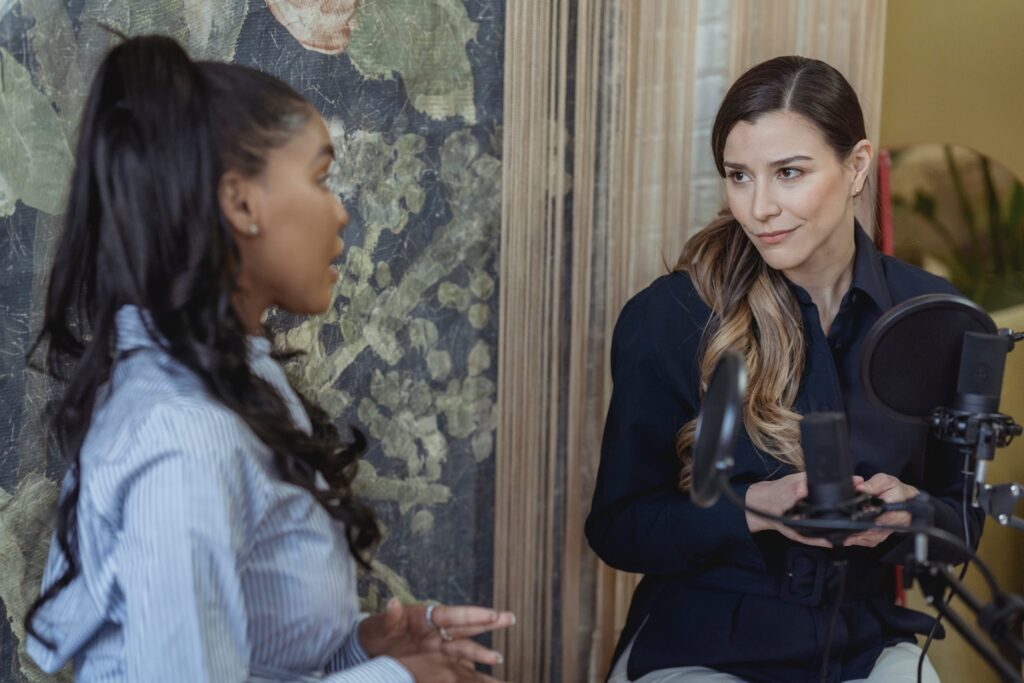Shawnna Sumaoang: Hi, and welcome to the Sales Enablement PRO podcast. I am Shawnna Sumaoang. Sales enablement is a constantly evolving space and we’re here to help professionals stay up to date on the latest trends and best practices so that they can be more effective in their jobs. Today, I’m excited to have Jasmine Coffee from ServiceNow join us. Jasmine, I would love for you to introduce yourself, your role, and your organization to our audience.
Jasmine Coffee: Hi, I’m so excited to be here today. As you mentioned, my name is Jasmine. I’ve been in the instructional design space for almost six years. I’ve worked in the financial industry, the telecommunications industry, and now I work at ServiceNow, which provides a cloud platform that helps companies manage digital workflows.
I started at ServiceNow a little over a year ago in the global sales enablement organization, and recently I started a new role as a learning experience designer on an innovation team within the training and certification organization at ServiceNow. It’s a really exciting group to be a part of, I could probably spend a whole podcast episode just fangirling over my entire chain of leadership, to be honest.
SS: I love that. Actually, you caught my eye on LinkedIn because you mentioned that your focus is really around developing next-generation learning experiences. I’d love to double click there to start with. What does that look like in practice, and how are you innovating and improving learning through instructional design?
JC: This is an awesome question. Before jumping into the practice of it, I’d love to touch on the zeitgeist that makes up what next-generation learning experiences I think will be like, and I see them falling into three main buckets. The first bucket includes next-generation learning experiences that include an emotional element woven throughout.
We all know that the most impactful lessons that we learn are emotionally driven experiences that probably take place in our personal lives, or if they don’t, they are still tied up in emotions that touch on our sense of identity. Not all emotions have a place in a corporate learning experience, but engaging learners using elements like surprise, anticipation, and humor can be incredibly impactful.
As humans, we have emotional scripts that we follow, where an emotion is triggered, and a series of other feelings unfold that are also very much wrapped up in how we remember things. You can see emotional scripts, crossing languages, crossing cultures, and there’s actually a strategy called emotional scripting, and it is where someone is intentionally trying to prompt an emotion to trigger that innate brain process to enhance a learning experience and increase the retention of the information delivered. Standardizing how we do that is one bucket I would say for what next-generation learning experiences look like in a corporate setting.
Bucket two is, in my opinion, using familiar tools in a new way. Over the last six years, I’ve created so many e-learning assets, and how we use offering tools is pretty much uniform across companies, but the functionality and logic that you can create in tools like that can really spice things up if you think outside of the box. Instead of creating a standard e-learning course and uploading it to an LMS, why not create an interactive media experience like a branching scenario or a game that can be embedded on a webpage with an eye frame and focuses more on creating a fun experience for the learner instead of using that tool to collect assessment or completion data on them.
The third bucket is creating learning experiences that mimic real-life experiences as close as possible. So, simulations and training framed around a real-life scenario is what we see these days, but I believe that the next wave is using AI to create conversations that feel like you’re talking to a real person. Also augmented and virtual reality as a standard way of life is a lot closer than people think it is.
I have a headset and because I’m a nerd, I mostly use it to watch educational content. And when I say those learning experiences are mind-bending, I mean that with my whole heart. There’s already a lot of existing content out there. If that was how I learned biology or chemistry in high school, I might be on a totally different career path just based on how exciting that content is.
In the same way it was brand new 10 years ago to see tablets instead of textbooks in a classroom setting, I think we’ll start seeing equipment for AR and VR experiences in the different learning settings we’re in. So, circling back to what that looks like in practice. For me right now, it’s all about experimenting with tools like chatbots to build out conversations that feel like you’re talking to a person online, which hits on that emotional scripting point and the mimicking real-life experiences point that I just talked about.
Everyone on my team is very invested in exploring how to create learning experiences using AR and VR right now. I personally own a 360 camera and have created content in that space that’s compatible with the VR headset. I also think creating simulated software experiences that feel like you’re in a system without actually being in the system has been a trick that’s very simple to use, but very impactful from an assessment standpoint. Essentially what creating new experiences looks like in practice is finding the balancing point between what you’re good at, what tools would be ideal to create the experience, and what you know people care about.
SS: I love that Jasmine and that does sound very, very next generation from a learning experience perspective. I mean, in contrast with kind of traditional learning experiences, for sure. I’d love to talk about, you know, what are some of the challenges that maybe, you know, you touched on this a tad, but I want to deep dive into this. What are some of the challenges that traditional learning experiences might pose for salespeople specifically today? How do you address those challenges as you design your learning programs?
JC: We’re so conditioned through social media platforms and video channels that we follow to prefer engaging and quick content. Dying on an instructional design academic hill isn’t going to change that anytime soon. Traditional learning experiences are typically synchronous and formal while next-generation learning experiences lean even further into being asynchronous and should weave effortlessly into the flow of work throughout the day. I think that the biggest challenge that traditional learning experiences pose for salespeople is that they often stifle the natural skillsets of a salesperson.
It’s usually not personalized to the individual. So, let’s use a hypothetical salesperson named Sally, for example, and let’s say Sally is just an absolute titan when it comes to sales. Whether she realizes it or not, Sally is an expert in creating learning experiences. That’s what she is doing all day with her clients.
She is using emotional scripting and critical thinking all day. In my opinion, enablement for Sally should be personalized and she should have a lot of input about what kind of enablement she needs for the year or the quarter. And she should have a choice about the format of that enablement based on her own preferences, instead of being forced to follow traditional learning paths if they don’t suit her well.
SS: I love that scenario and examples so thank you for walking us through that. Now, you serve a variety of audiences with your learning programs. How do you go about learning the needs of each of your audiences and how do you ensure that those needs are reflected in the experiences that you deliver?
JC: Yeah, it can be hard at times, but honestly you have to talk to frontline learners. You can’t collect that information from leadership only. You can do this in a variety of ways like surveys or other traditional needs assessment methods. My preference is to have ongoing conversations with key people in the audience that I’m serving.
There is always at least one person who everyone goes to for information who has taken it upon themselves to create content or resources already, and who is essentially running a grassroots campaign of enablement before a decision is made to formally get someone like me involved. Connecting with that person is always so critical for a project.
They are the most important stakeholder in my opinion, and also the most important reviewer. And they’re also the most important ally to have on any project because they are already more invested than anybody else on that project being successful.
To ensure the needs are met on a project that is done, you have to have a mechanism for learners to give you feedback. And it’s good to determine on the front end of a project when would be a good time to check back in at a later date if we need to update that content.
SS: That makes a ton of sense. Now, you have yourself a master’s degree in learning systems design. I’d love to understand, given your expertise in this area, how can technology be leveraged to improve learning experiences?
JC: Technology is so ingrained in all of our lives. It allows you to take a concept and create an enriched experience that goes beyond me simply explaining something to you with a PowerPoint.
On top of enriching learning experiences technology allows us to scale and reach thousands if not millions of people with a small number of folks. I think what we’re going to see moving forward is even more tech that is personalized and scalable in the learning space.
SS: Now I want to click in because you earlier had mentioned some really interesting multimedia projects that incorporate AR and animation. Talk to me about how LX designers can incorporate multimedia into learning experiences a little bit more and how that can have a direct impact on driving engagement.
JC: In my opinion, at this point in the industry, all LX designers should be incorporating multimedia into their learning experiences. That is just the standard at this point, in my opinion. Overall, I think LX designers should accept that short video content is a preferred consumption method for learners and focus on getting comfortable with creating that kind of content and exploring how they want to package that into offering tools that they’re not ready to get rid of quite yet.
Something I’d like to see more of in my industry is people using social media, like LinkedIn, to plug the content they’ve created, because it’s such an easy and low-hanging fruit to build engagement easily. The engagement loop of promoting a learning experience on LinkedIn with an engaging social media video that links out to an actual course is more impactful than if an email just hits my inbox with a new course available in the body of it.
SS: Absolutely. Jasmine, I’ve learned a ton from you. I would love your perspective in closing, you know, how do you think that the learning experience design will continue to evolve this year and maybe in the years to come? How can sales enablement and learning practitioners plan for that transformation?
JC: Yeah. This is a really great question. This year, I think we’re going to see a lot more in the AR VR space than we’re even expecting. I think we’re going to see the art of explaining something in 15 to 30-second chunks be even more polished and prevalent in the industry. I also think we’re going to see a shift in the metrics we care about.
Metrics like views versus enrollments, and learner satisfaction over assessment scores. I think the best way to prepare for it is to stay agile, stay open, and take the initiative to learn more about those areas if you aren’t ready. Don’t be afraid to fail and fail fast, try something, get feedback, and adapt from there.
SS: I love that advice. Jasmine, thank you so much for joining our podcast today. I learned a ton from you.
JC: Awesome. I’m super thankful to join you guys today. It was really fun.
SS: To our audience, thanks for listening. For more insights, tips, and expertise from sales enablement leaders, visit salesenablement.pro.
If there’s something you’d like to share or a topic you’d like to learn more about, please let us know. We’d love to hear from you.







